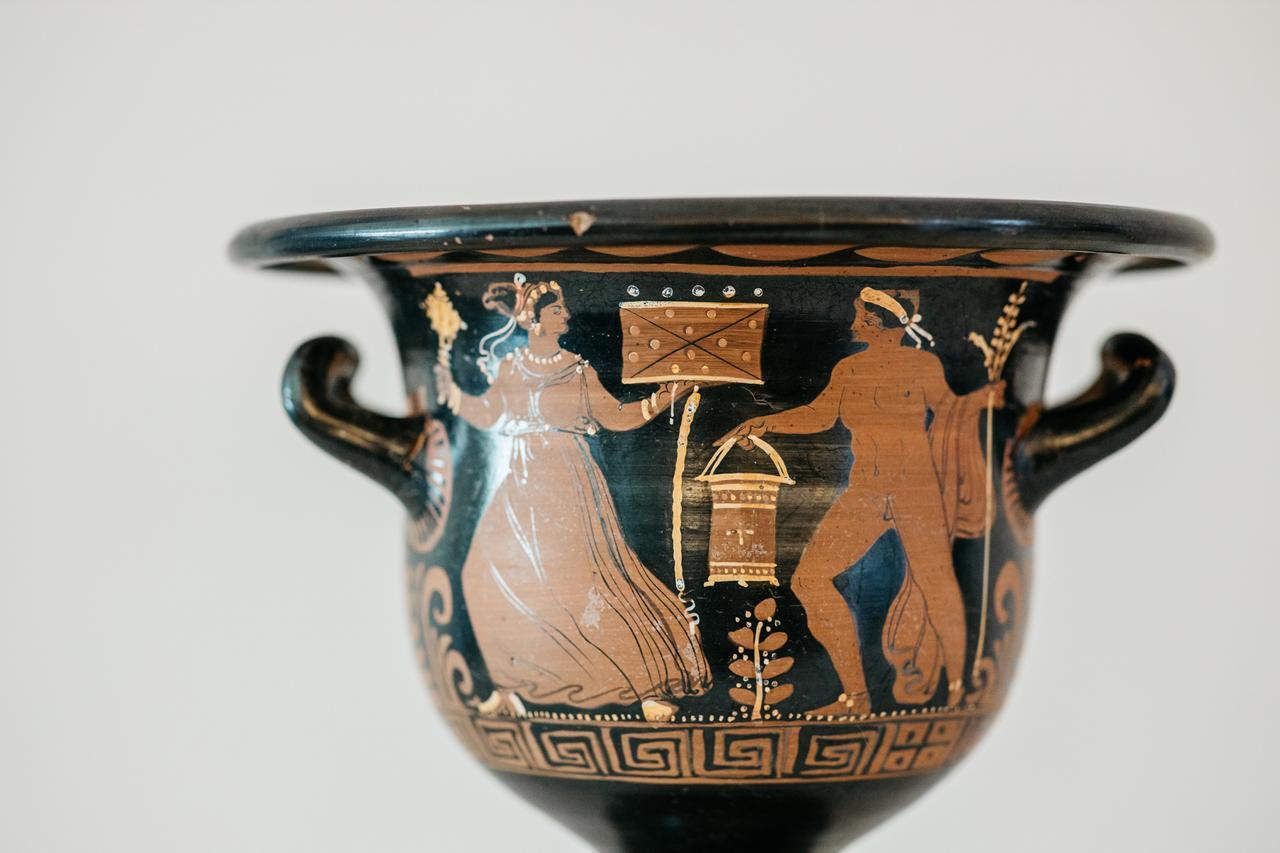Phénicien Terre cuite Ex-voto ou idole représentant un Triton. VIe-IVe siècle av. J.-C. 32 cm de haut. Provenance

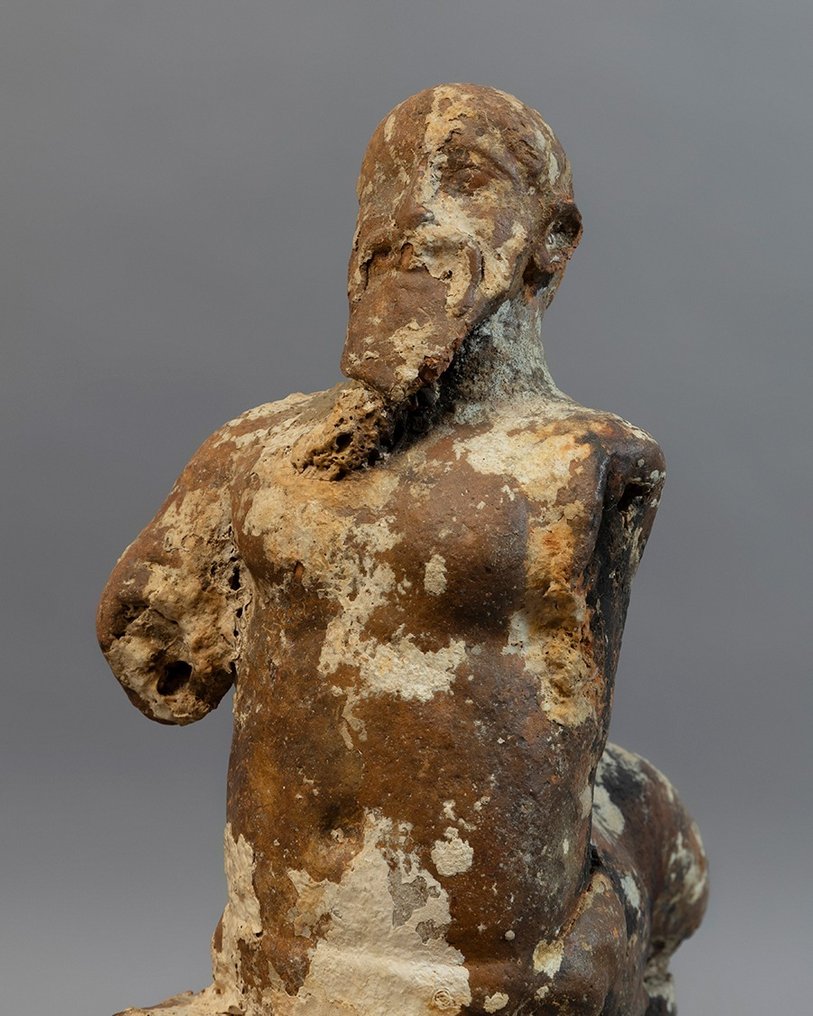
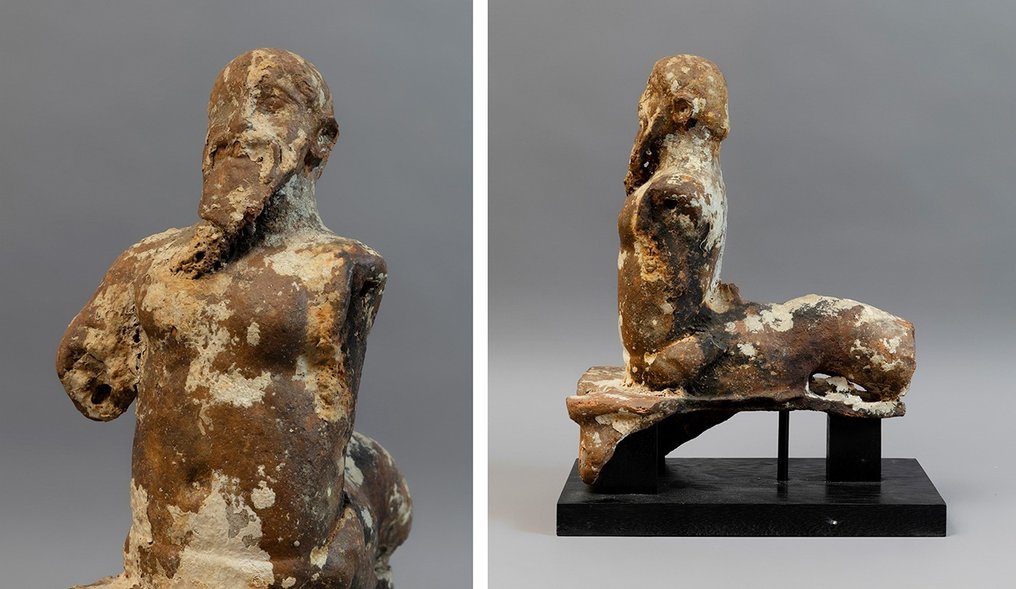
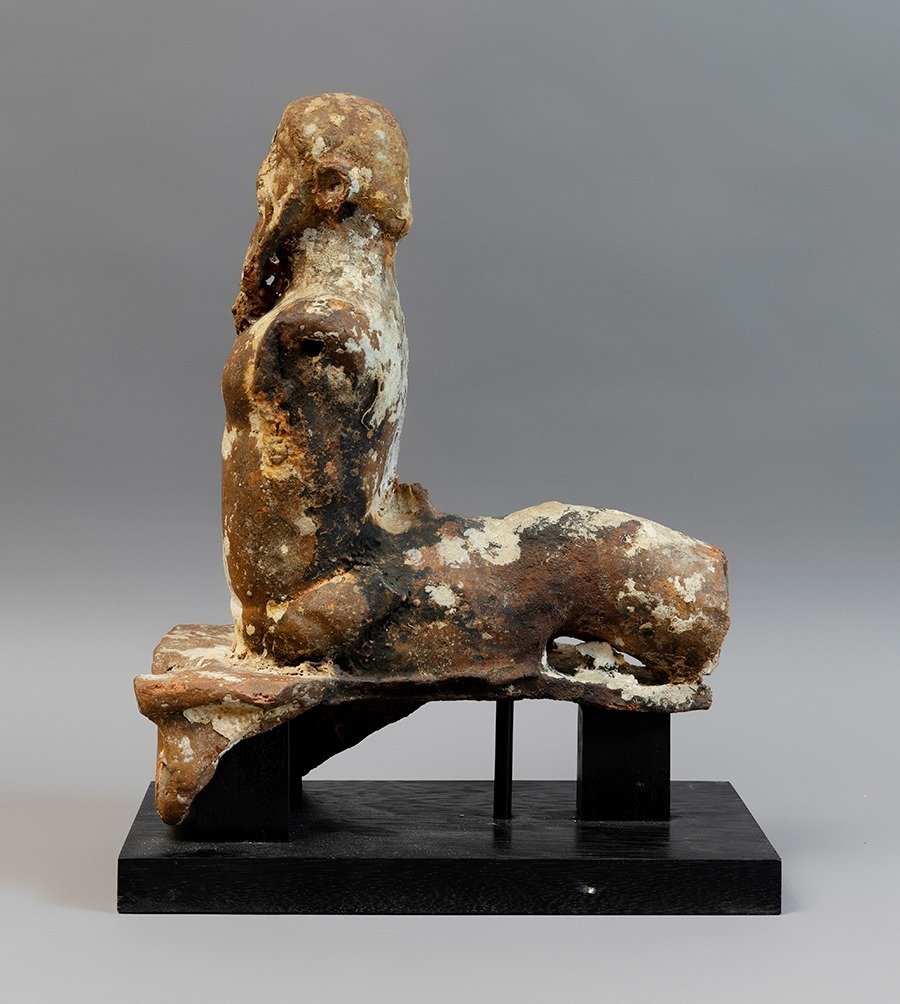
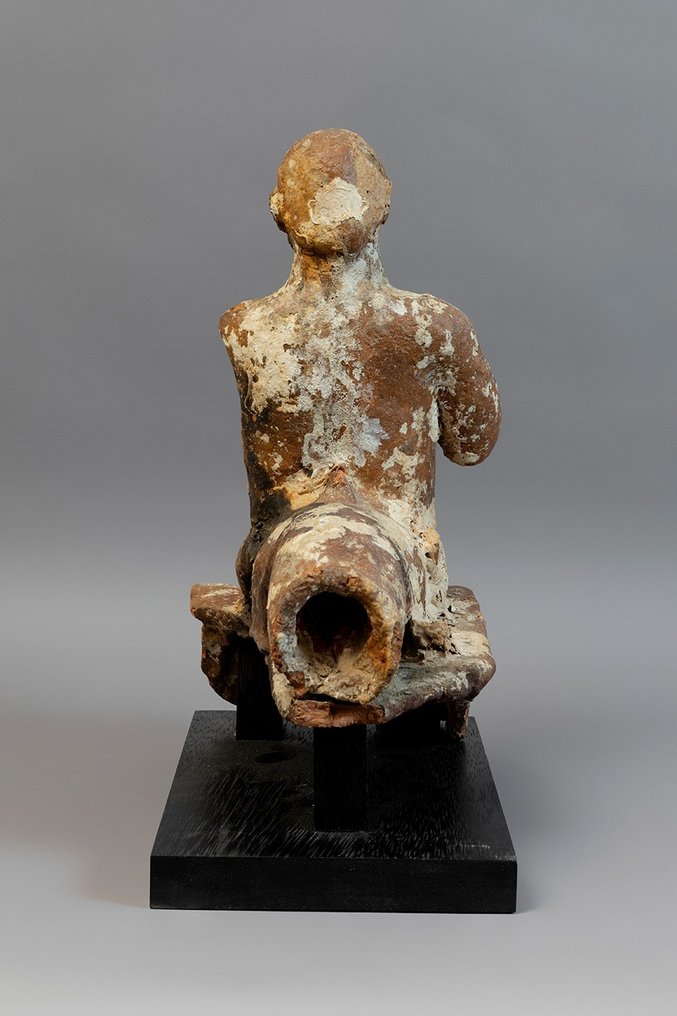

A dirigé le musée de la collection Ifergan, spécialisée en archéologie phénicienne.
 Enchérisseur 3353 Enchérisseur 3353 | 1 € |
|---|
Protection des acheteurs Catawiki
Votre paiement est en sécurité chez nous jusqu’à la réception de votre objet.Voir les informations
Trustpilot 4.4 | 122473 d’avis
Noté Excellent sur Trustpilot.
Ex-Voto ou Idole phénicien en terre cuite représentant un Triton, environ du VIe au IVe siècle av. J.-C., 32 cm de haut (36 cm avec socle), en bon état sans restauration, avec socle et provenance de la collection Maurice Druon.
Description fournie par le vendeur
Figure importante d'un ex-voto ou d'une idole représentant un triton.
Phénicien, vers le VIe - IVe siècle av. J.-C.
32 cm H et 27 cm L. (sans support) 36 cm H avec support.
- Présentoir inclus -
PROVENANCE : Collection Maurice Druon, Paris 1918 - 2009. Druon était un écrivain et académicien français, ministre de la Culture de France entre 1973 et 1974.
Bon état, voir les photos, non restauré.
DESCRIPTION
Il représente une créature hybride, la moitié supérieure étant le corps d'un homme et la moitié inférieure étant un corps de poisson, en particulier la queue.
Il est présenté sur une base en forme d'autel. Le torse humain est nu, avec des traits fins tels que la poitrine et le nombril. Le visage affiche une expression sereine avec de grands yeux en amande soulignés par des paupières marquées d'une ligne épaisse, ce qui constitue une interprétation phénicienne clairement inspirée de l'art grec archaïque.
Au sommet du menton, il y a une fausse barbe, rappelant celle utilisée par les pharaons égyptiens comme symbole de pouvoir. Les cheveux sont travaillés de manière lisse, délimités tout autour par une ligne de design géométrique qui encadre la forme de la tête de l'homme, cette dernière étant en lien avec la tradition grecque classique. Ainsi, on peut voir qu'il s'agit d'une pièce qui combine éclectiquement des influences de styles tels que grec ou égyptien, résultat des contacts des Phéniciens avec ces cultures.
En ce qui concerne son iconographie, il pourrait s'agir de Yam, le dieu de la mer dans le panthéon cananéen. Yam est une divinité de la mer et son palais se trouve dans l'abîme associé aux profondeurs. Il représente le chaos primordial, la puissance de la mer, incontrôlable et furieuse ; il est considéré comme le dieu des tempêtes dominantes et des catastrophes qu'elles engendrent, et il était une divinité importante pour les Phéniciens maritimes.
Cette figure appartient à un groupe de terracottas phéniciennes qui sont restées 2 500 ans sous la mer jusqu'aux années 1960, lorsqu'une découverte fortuite a permis de retrouver toutes les pièces. L'une des hypothèses envisagées est que les Phéniciens, confrontés au siège que la ville subissait par Alexandre le Grand, ont chargé leurs navires avec ces pièces afin de fuir la ville avec leurs biens les plus précieux. Cependant, une tempête doit les avoir surpris à quelques kilomètres de la côte, provoquant le naufrage du navire et la plongée des bateaux en terracotta qu'il contenait.
Le dieu de la mer Triton, d'origine grecque, est représenté sur cette offrande votive phénicienne avec un visage stylisé encadré par une barbe lui conférant une allure aristocratique. Le torse musclé se courbe au niveau des hanches, s'étendant vers l'arrière avec une longue queue. Il pouvait probablement initialement souffler dans une conque. Il suit les préceptes grecs en termes de représentation, avec le torse d'un homme et la partie inférieure d'un poisson. La légende raconte que Triton vivait avec ses parents, Poséidon et Amphitrite, dans un palais doré au fond de la mer. Il est souvent représenté avec une conque qu'il souffle comme une trompette. La culture phénicienne, puis les Romains, ont hérité de cette figure et en ont réinterprété la symbolique. Ici, adoptant le rôle d'un ex-voto, il souhaite la bonne fortune aux marins.
Notes:
Le vendeur garantit qu'il a acquis cette pièce conformément à toutes les lois nationales et internationales relatives à la propriété du patrimoine culturel. Déclaration de provenance vue par Catawiki.
Le bijou comprend un certificat d'authenticité.
La pièce comprend une licence d'exportation espagnole.
LE MINISTÈRE DE LA CULTURE D'ESPAGNE DEMANDE À TOUS LES VENDEURS DES FACTURES OU AUTRES DOCUMENTS POUVANT PROUVER LA LÉGALITÉ DE CHAQUE ARTICLE AVANT DE FOURNIR UNE LICENCE D'IMPORTATION OU D'EXPORTATION.
À propos du vendeur
Figure importante d'un ex-voto ou d'une idole représentant un triton.
Phénicien, vers le VIe - IVe siècle av. J.-C.
32 cm H et 27 cm L. (sans support) 36 cm H avec support.
- Présentoir inclus -
PROVENANCE : Collection Maurice Druon, Paris 1918 - 2009. Druon était un écrivain et académicien français, ministre de la Culture de France entre 1973 et 1974.
Bon état, voir les photos, non restauré.
DESCRIPTION
Il représente une créature hybride, la moitié supérieure étant le corps d'un homme et la moitié inférieure étant un corps de poisson, en particulier la queue.
Il est présenté sur une base en forme d'autel. Le torse humain est nu, avec des traits fins tels que la poitrine et le nombril. Le visage affiche une expression sereine avec de grands yeux en amande soulignés par des paupières marquées d'une ligne épaisse, ce qui constitue une interprétation phénicienne clairement inspirée de l'art grec archaïque.
Au sommet du menton, il y a une fausse barbe, rappelant celle utilisée par les pharaons égyptiens comme symbole de pouvoir. Les cheveux sont travaillés de manière lisse, délimités tout autour par une ligne de design géométrique qui encadre la forme de la tête de l'homme, cette dernière étant en lien avec la tradition grecque classique. Ainsi, on peut voir qu'il s'agit d'une pièce qui combine éclectiquement des influences de styles tels que grec ou égyptien, résultat des contacts des Phéniciens avec ces cultures.
En ce qui concerne son iconographie, il pourrait s'agir de Yam, le dieu de la mer dans le panthéon cananéen. Yam est une divinité de la mer et son palais se trouve dans l'abîme associé aux profondeurs. Il représente le chaos primordial, la puissance de la mer, incontrôlable et furieuse ; il est considéré comme le dieu des tempêtes dominantes et des catastrophes qu'elles engendrent, et il était une divinité importante pour les Phéniciens maritimes.
Cette figure appartient à un groupe de terracottas phéniciennes qui sont restées 2 500 ans sous la mer jusqu'aux années 1960, lorsqu'une découverte fortuite a permis de retrouver toutes les pièces. L'une des hypothèses envisagées est que les Phéniciens, confrontés au siège que la ville subissait par Alexandre le Grand, ont chargé leurs navires avec ces pièces afin de fuir la ville avec leurs biens les plus précieux. Cependant, une tempête doit les avoir surpris à quelques kilomètres de la côte, provoquant le naufrage du navire et la plongée des bateaux en terracotta qu'il contenait.
Le dieu de la mer Triton, d'origine grecque, est représenté sur cette offrande votive phénicienne avec un visage stylisé encadré par une barbe lui conférant une allure aristocratique. Le torse musclé se courbe au niveau des hanches, s'étendant vers l'arrière avec une longue queue. Il pouvait probablement initialement souffler dans une conque. Il suit les préceptes grecs en termes de représentation, avec le torse d'un homme et la partie inférieure d'un poisson. La légende raconte que Triton vivait avec ses parents, Poséidon et Amphitrite, dans un palais doré au fond de la mer. Il est souvent représenté avec une conque qu'il souffle comme une trompette. La culture phénicienne, puis les Romains, ont hérité de cette figure et en ont réinterprété la symbolique. Ici, adoptant le rôle d'un ex-voto, il souhaite la bonne fortune aux marins.
Notes:
Le vendeur garantit qu'il a acquis cette pièce conformément à toutes les lois nationales et internationales relatives à la propriété du patrimoine culturel. Déclaration de provenance vue par Catawiki.
Le bijou comprend un certificat d'authenticité.
La pièce comprend une licence d'exportation espagnole.
LE MINISTÈRE DE LA CULTURE D'ESPAGNE DEMANDE À TOUS LES VENDEURS DES FACTURES OU AUTRES DOCUMENTS POUVANT PROUVER LA LÉGALITÉ DE CHAQUE ARTICLE AVANT DE FOURNIR UNE LICENCE D'IMPORTATION OU D'EXPORTATION.
À propos du vendeur
Détails
Mentions légales
Le vendeur a été informé par Catawiki des exigences en matière de documentation et garantit les éléments suivants : - l’objet a été obtenu de manière légale, - le vendeur a le droit de vendre et/ou d’exporter l’objet, le cas échéant, - le vendeur fournira toutes les informations nécessaires sur la provenance, et tiendra à disposition les documents, permis ou licences requis, conformément aux lois locales, - le vendeur informera l’acheteur de tout retard dans l’obtention de ces permis ou licences. En enchérissant, vous reconnaissez que des documents d’importation peuvent être requis selon votre pays de résidence, et que l’obtention de permis ou licences est susceptible de retarder la livraison de votre objet.
Le vendeur a été informé par Catawiki des exigences en matière de documentation et garantit les éléments suivants : - l’objet a été obtenu de manière légale, - le vendeur a le droit de vendre et/ou d’exporter l’objet, le cas échéant, - le vendeur fournira toutes les informations nécessaires sur la provenance, et tiendra à disposition les documents, permis ou licences requis, conformément aux lois locales, - le vendeur informera l’acheteur de tout retard dans l’obtention de ces permis ou licences. En enchérissant, vous reconnaissez que des documents d’importation peuvent être requis selon votre pays de résidence, et que l’obtention de permis ou licences est susceptible de retarder la livraison de votre objet.
